BY PAULY SUBA
Journal Staff
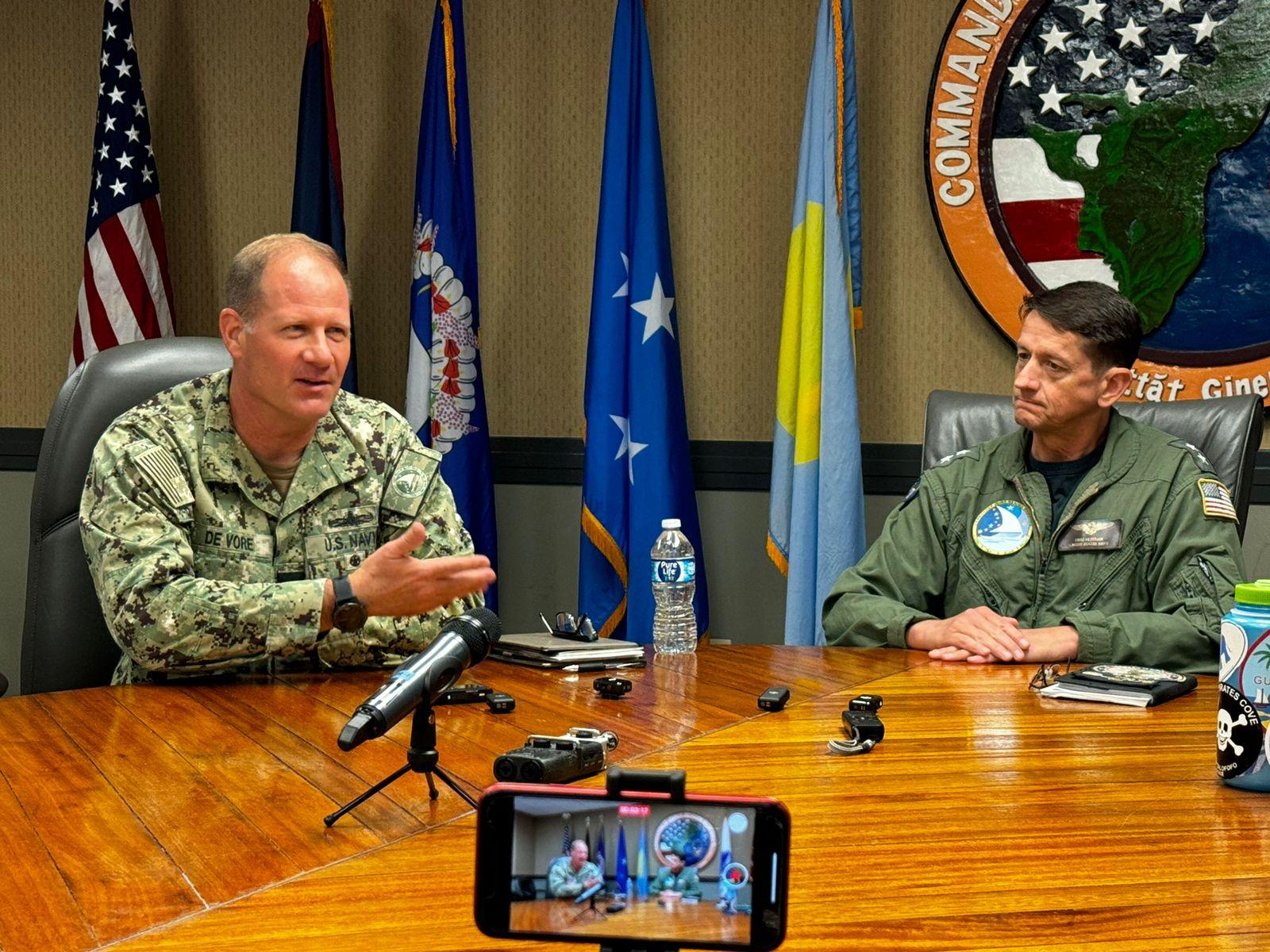
Rear Adm. Gregory C. Huffman will soon hand over command of Joint Region Marianas to Rear Adm. M. Brent DeVore in a ceremony on June 6, but Huffman is far from leaving Guam. He will stay on the island to lead the newly established Joint Task Force Micronesia.
“I am really excited to be here for the last year. I’m also the luckiest commander of the Joint Region because while I am having a change of command next week, I get to remain in Guam,” Huffman said. “I will be standing up the Joint Task Force Micronesia on the island, focused on the entire region.”
DeVore, who is preparing to take over Huffman’s role, expressed his enthusiasm for his new position and for becoming part of the Guam community. DeVore said, “I just want to cement our relationship and, more importantly, the word community. Guam and the entire region are so welcoming. We want to honor that and join your community and be a part of that.”
Huffman highlighted the significant changes occurring in the region, particularly the establishment of the Joint Task Force Micronesia. “We are going through some changes as we are standing up the Joint Task Force… this exemplifies the Department of Defense’s commitment to Guam and to the region to ensure that we continue to build out the ability to maintain a safe and secure Indo-Pacific region.”
DeVore echoed Huffman’s sentiments, noting the visible commitment of the Department of the Navy to the region. “The commitment that our Department of the Navy has made to the region … it is a very visible demonstration just by the fact that there are now two of us here working on these issues,” DeVore said.
As Huffman transitions to his new role, he outlined his ongoing responsibilities and the expected growth of his staff. He said, “currently, at Joint Region Marianas, we have four major lines of effort. My staff will be focused on more of the partnership, more of the relationship building, more of the oversight of operational forces as they operate in this theater.”
Huffman said, “DeVore’s staff will be focused more closely on the installation support and managing the growth and the construction here on Guam.”
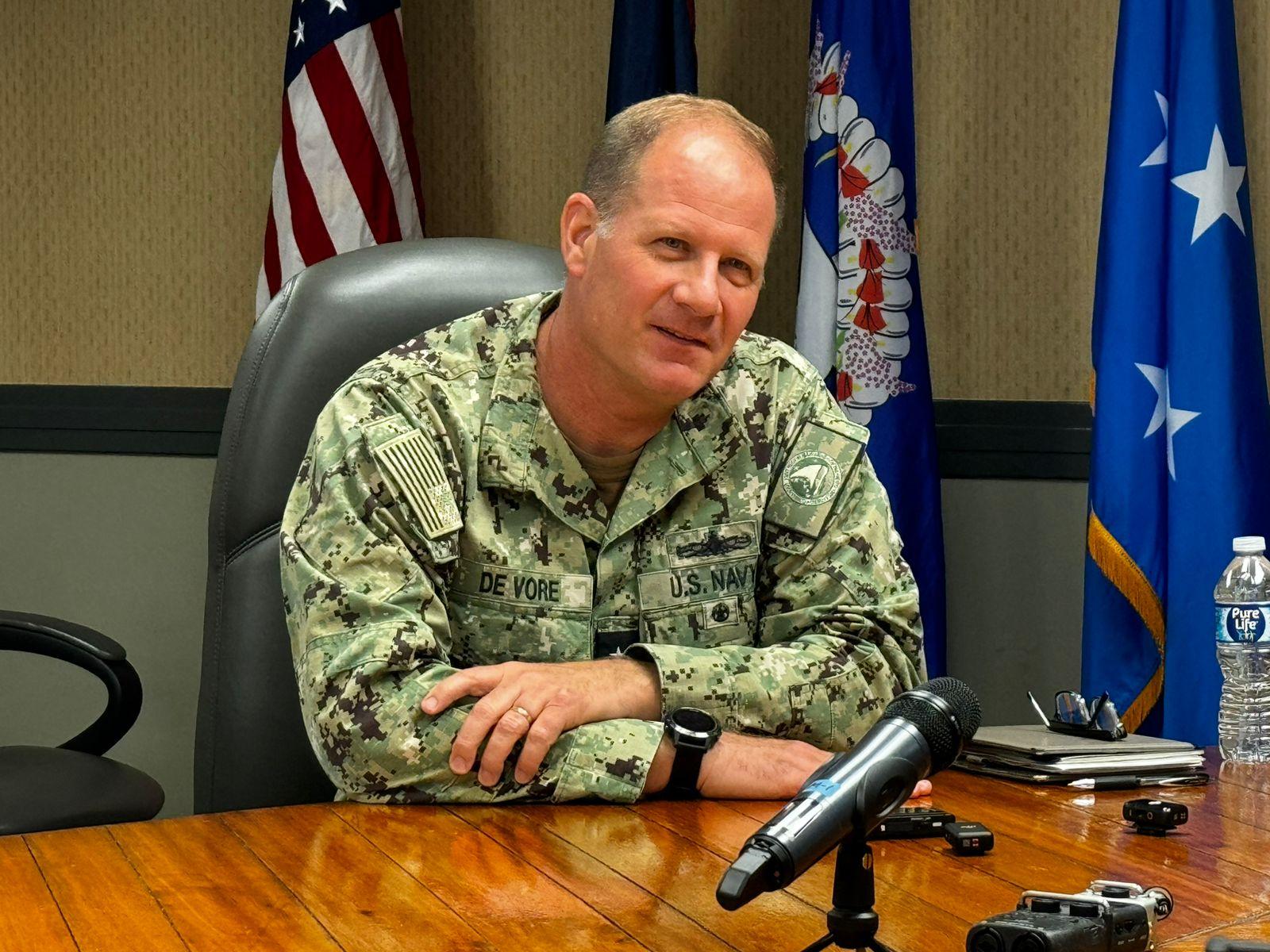
Addressing the upcoming military buildup, Huffman said, “this is an opportune time to really take advantage of that, bring in the new joint task force, establish that, and start building those community relationships.”
Because Huffman will be assuming the leadership role of the Joint Task Force Micronesia, he won’t need to move offices either. He said, “We are also looking at how bring in an entirely new staff; where will we physically operate?” Huffman said the task force will initially operate at the Joint Region Marianas headquarters, which will allow both divisions to collaborate directly on issues. Huffman said, “as the Joint Task Force matures, we’ll look to potentially other locations… but at least initially, we’re going to be one very large integrated staff.”
“We are up to about 25 personnel on the island right now, and so that will continue to build up,” Huffman said. “When we get to a core group of about 40 personnel for the Joint Task Force, that will be our central staff support. A lot of those people will be focused on planning and understanding the relationships and how we’re going to manage all our activities throughout the region.”
With the military buildup progressing, Huffman said he is aware of the projected growth that comes with it. “We have about 8,000 to 10,000 active-duty personnel right now, the real growth is going to happen in the next ten or so years,” Huffman said.
In terms of personnel, he said some of the bigger changes that will be seen in the future are an increase in the number of active-duty army personnel assigned to operate the Guam defense system that will be spread across the island on military property. He said, "Army personnel are likely to be based at Andersen Air Force Base and Naval Base Guam.” Huffman said he imagines that the U.S. Army will be using existing infrastructure rather than building a new, central Army base. He said there may be a support group co-located with the National Guard in Barrigada, but those details are still being worked out.
“The longer-term project will be the Marine Corps relocation of personnel from Okinawa. That really won’t take shape for several years,” Huffman said. Huffman confirmed that the Marines coming to Guam later in the year, will be smaller numbers mostly to implement the logistics to help facilitate the future growth of Marine Corps Base Camp Blaz.
Regarding the housing capacity to accommodate more military personnel, Huffman said, "We work really hard at understanding what the growth is going to look like… whether its utilities or housing or healthcare, you name it. We look at that very hard to understand what the capacity is from the community perspective and from the entire community, so we don’t overstress what’s going on.”
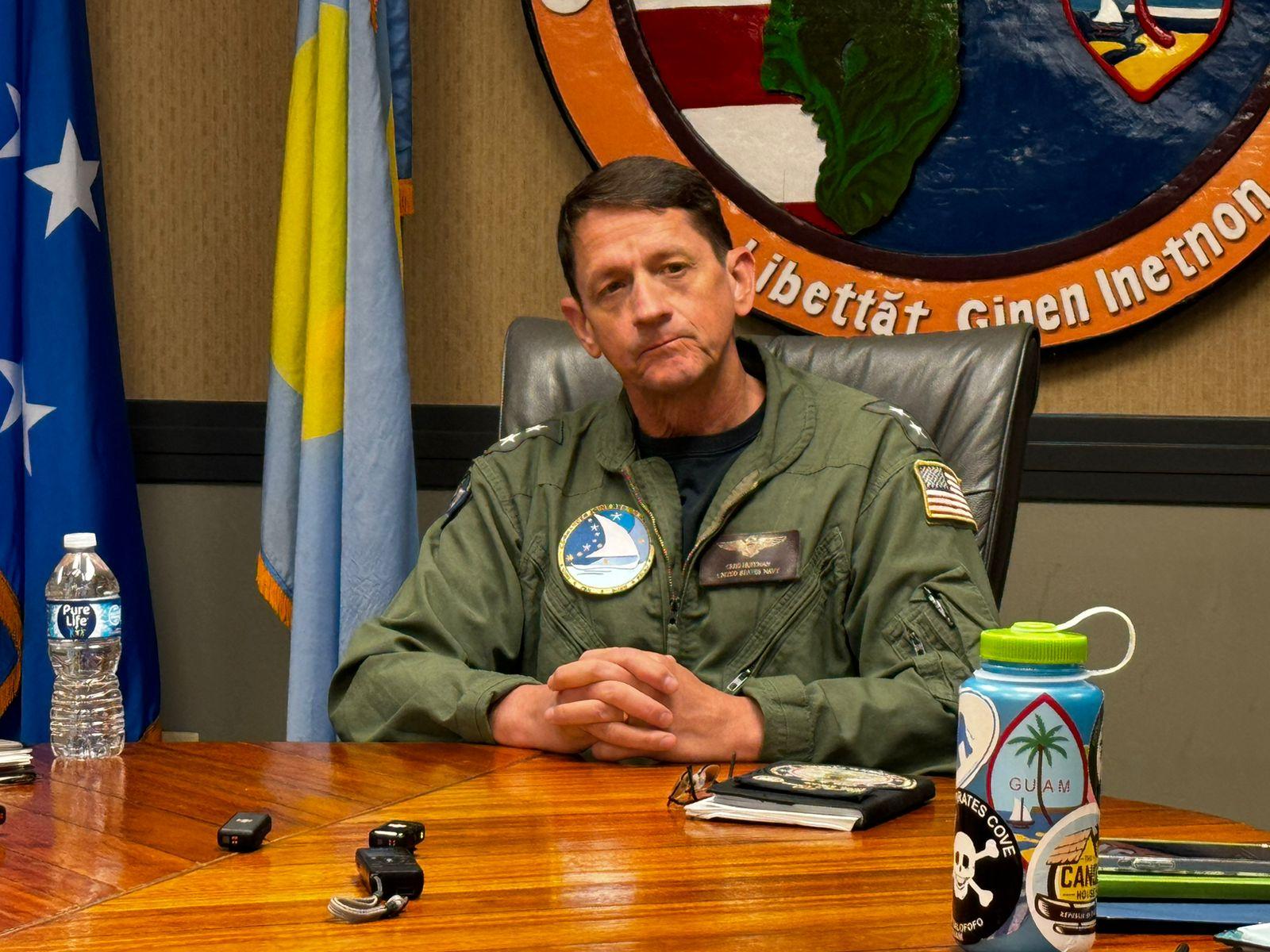
Addressing the housing shortages in Guam, Huffman said, "Housing is one of the primary topics that we address when we look at the growth of the military coming here. We do currently have members live on base first. That’s the agreement we have with the government of Guam and that’s our current policy on things before we send people out.”
Huffman also highlighted efforts to improve resilience and infrastructure by partnering with the government of Guam and FEMA. He said, “especially when it comes to power generation, power distribution… if we’re going to be laying some underground cable or fiber optic cable and its parallel with something that would benefit the community of Guam, we partner on that so we’re not digging a trench twice.”
When asked about the cooperation from the Federated States of Micronesia, Huffman said, “We do joint committee meetings twice a year, and we just hosted one here a few weeks ago. We’re looking to strengthen that relationship and get a better understanding of what our military footprint would look like throughout the FSM.” Huffman highlighted that the U.S. military provides the defense of the FSM, focused on being good partners.
DeVore, stepping into his new command, outlined his immediate priorities. “My first priority is certainly getting to know everybody in the area and forging those same relationships. And build upon what admiral Huffman has already done. We’re all trying to work towards the strong investment build-up here in the area,” DeVore said.

DeVore looks forward to continuing the collaborative efforts. “I’ve already had the opportunity to meet the governor and other local government members. I look forward to working with her and maintaining tight relations throughout the year,” he said.
As the change of command approaches, DeVore said, "We have two kinds of different lines of bosses that we're working for, but yet we're unified in our purpose and our close partnership with each other, working together on all of the activities here in Guam and throughout the region, to be able to do our part to ensure a free and open Indo-Pacific area… you really get kind of a two-for-one out of it.”
Reflecting on his tenure, Huffman said, “I’ve seen a lot of positive changes throughout the region… as I said in the beginning, I am the luckiest JRM commander ever because I get to stay here and continue to build upon that work. And now I have a great partner in Admiral DeVore to keep moving things forward in a positive direction.” mbj
Two-for-One effort for free Indo-Pacific
Recommended Articles...
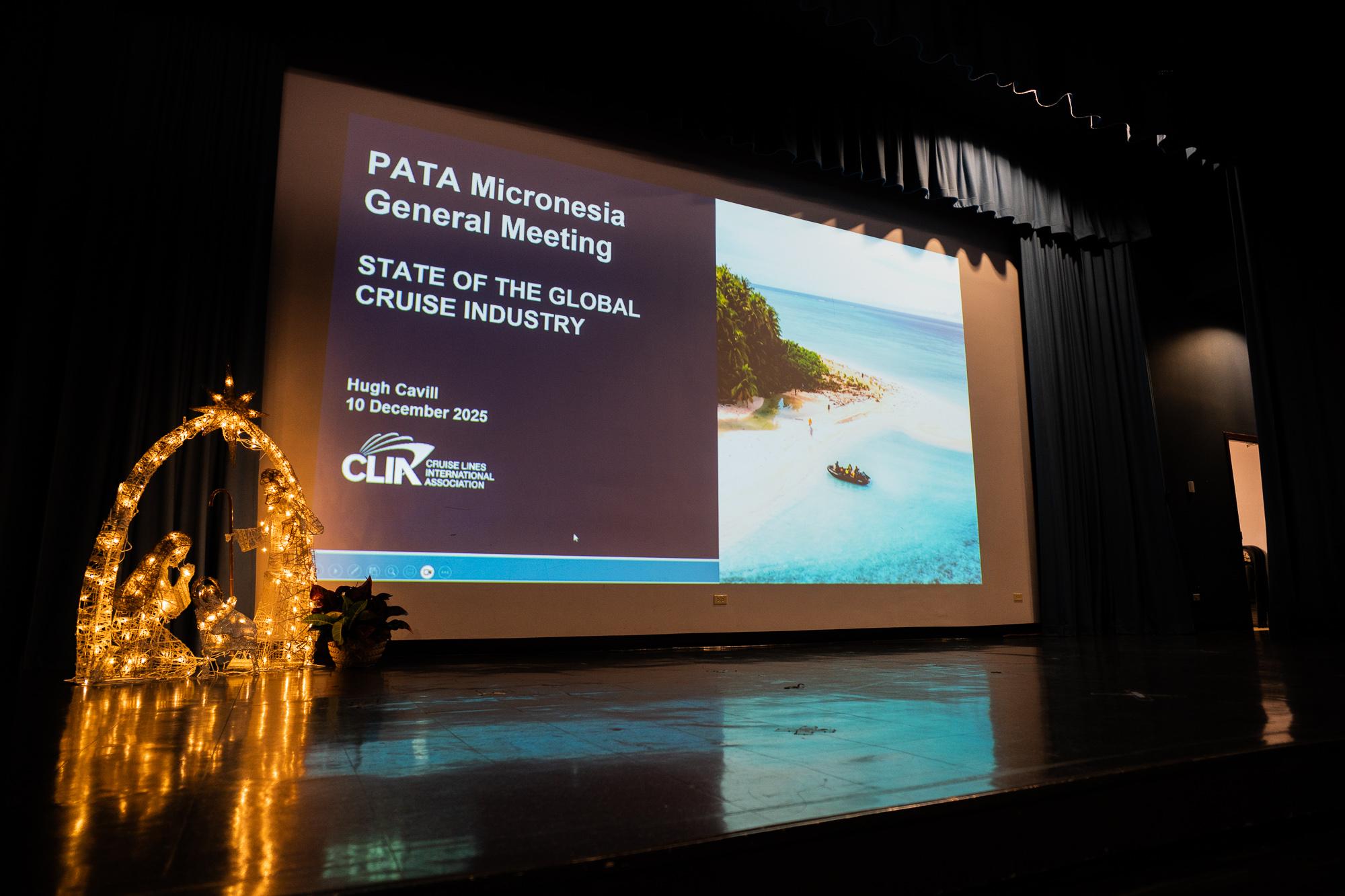
Cavill: Micronesia poised for cruise-based tourism
Hugh Cavill, director of government affairs for the Cruise Lines International Association, said Micronesia is positioned well for cruise-based tourism.
Read More 
Philippine Airlines will launch new flights to three of the islands in Micronesia in the coming weeks
The launch of additional PAL flights will not only add to the airline’s expansion into the Micronesia region, but will allow passengers direct flights with the airline, rather than any transit in Guam or Tokyo.
Read More 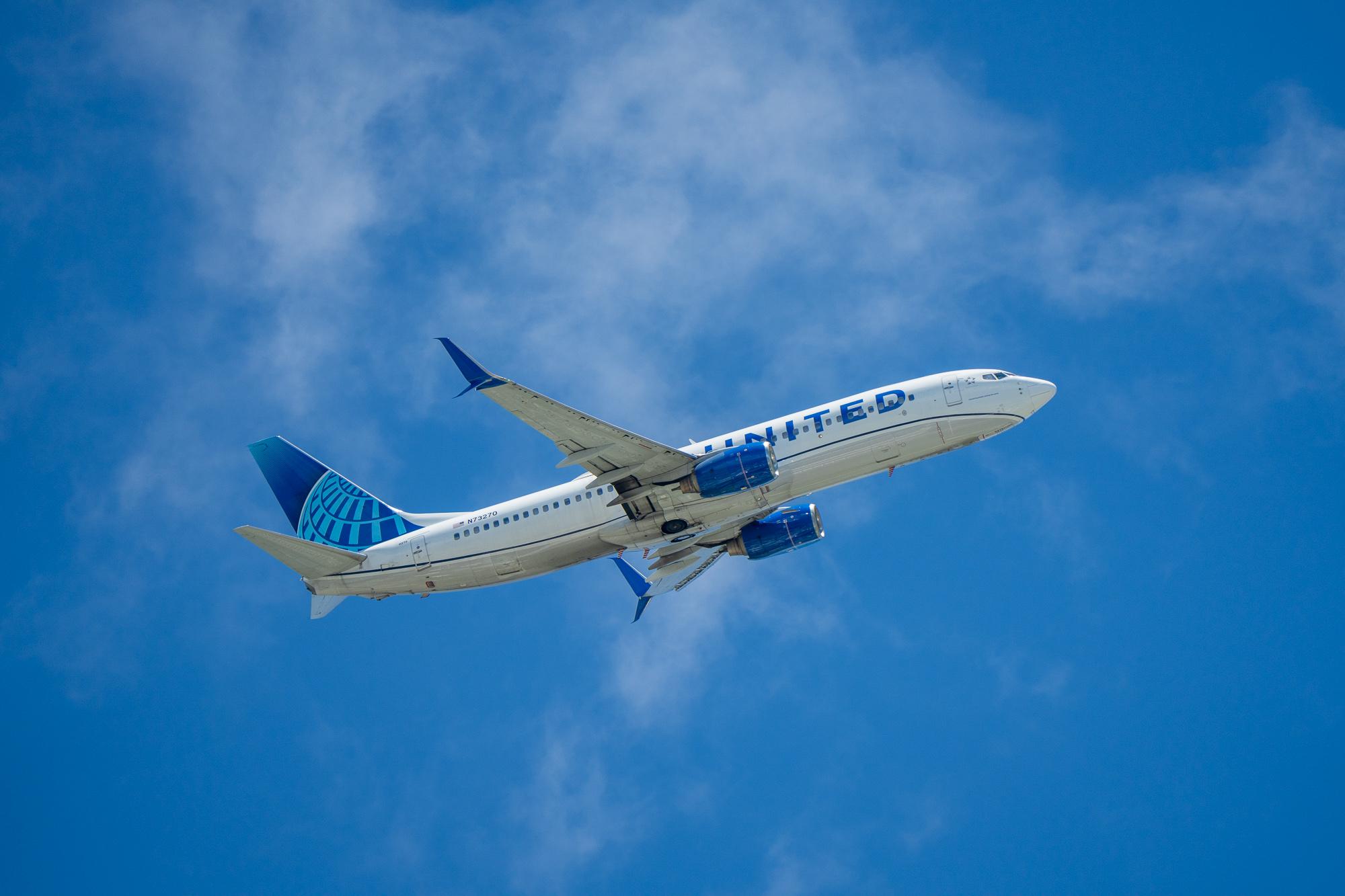
United executive says hotel renovations more important than destination flight incentives; new planes in 2026
Speaking at the Pacific Asia Travel Association’s Micronesia Chapter’s membership meeting on Oct. 21 in Yap, Anthony Falvo, senior manager for Pacific Network Planning for United Airlines, said incentives for airlines for a new route are not uncommon.
Read More 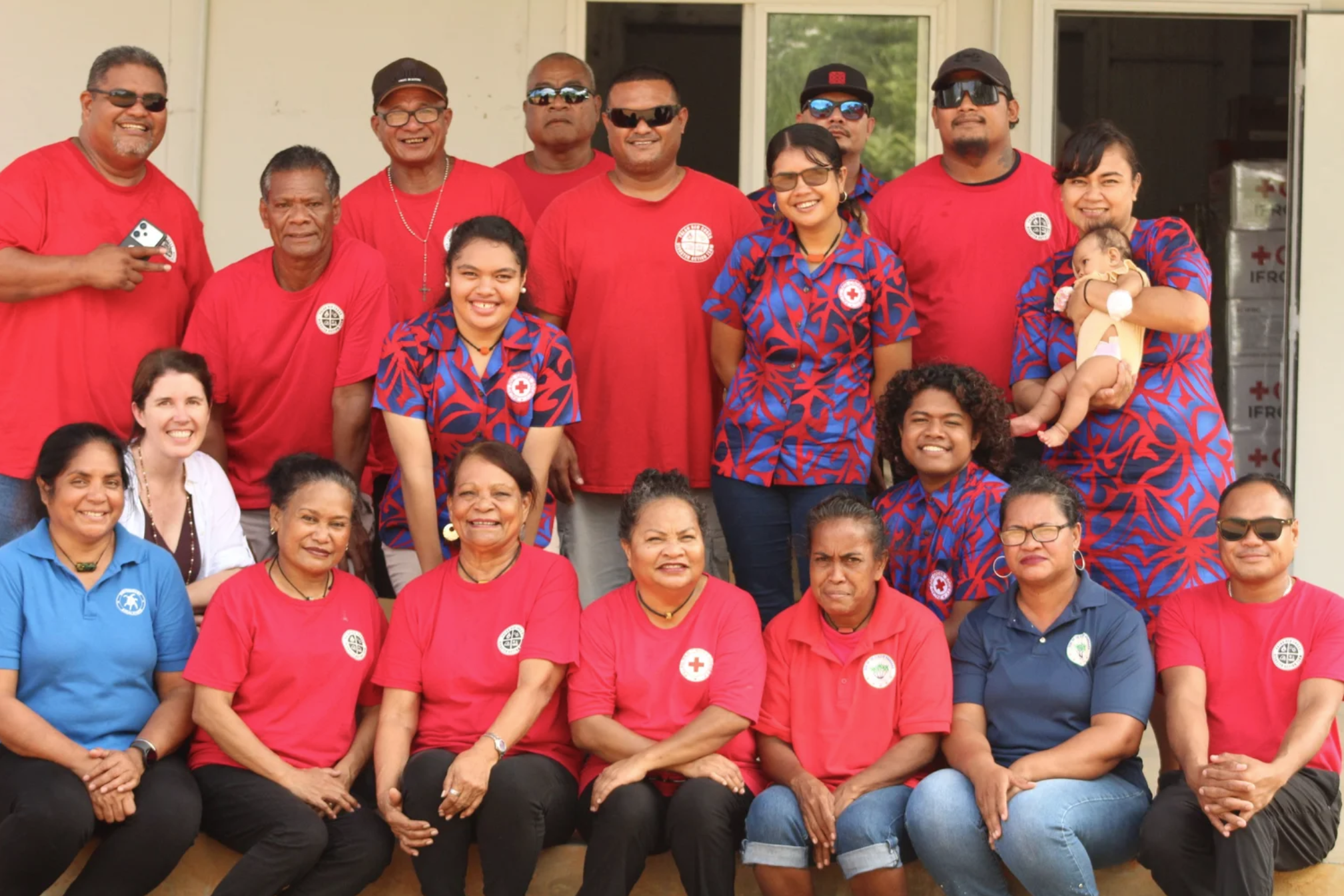
Red Cross Micronesia chapter conducts World First Aid Day 2025
The Red Cross has active groups in the island chains.
Read More 














